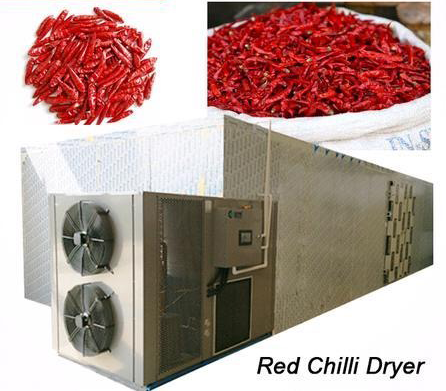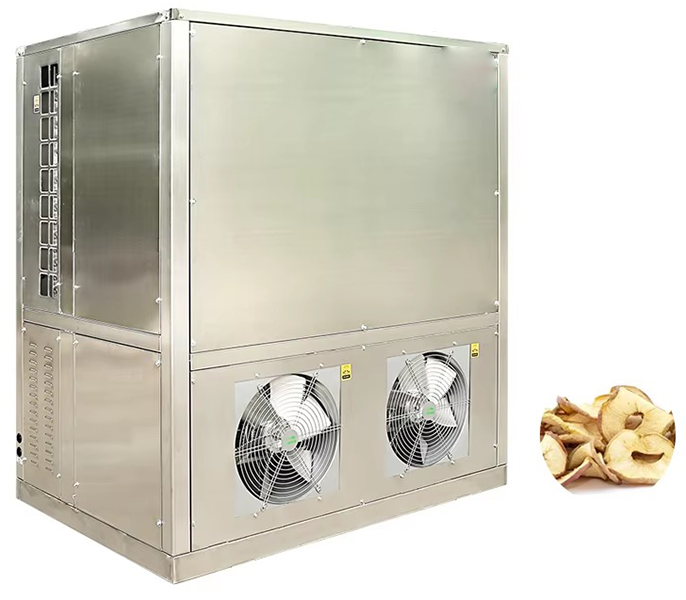
Content Menu
● Understanding Heat Pump Dryers
>> Benefits of Heat Pump Dryers
● When to Remove the Condenser
● Tools Required for Removal
● Step-by-Step Guide to Removing the Condenser
● Importance of Regular Maintenance
>> Cleaning Tips
● Additional Maintenance Considerations
● The Role of Food Dehydrators in Food Preservation
>> Benefits of Using Food Dehydrators
● Conclusion
● FAQ
>> 1. How often should I clean my heat pump dryer's condenser?
>> 2. Can I remove the condenser myself?
>> 3. What should I do if I encounter refrigerant lines?
>> 4. What are signs that my dryer needs maintenance?
>> 5. Is it safe to use my dryer without cleaning the condenser?
● Citations:
In the world of food processing and preservation, food dehydrators play a crucial role in extending the shelf life of products by removing moisture. As a manufacturer of food drying machines, understanding the intricacies of heat pump dryers, including their maintenance and component management, is essential. This article will explore how to safely remove the condenser from a heat pump dryer while also providing insights into food dehydrators, their benefits, and operational guidelines.

Understanding Heat Pump Dryers
Heat pump dryers are energy-efficient appliances that utilize a refrigeration cycle to extract moisture from clothes or other items. They work by compressing and circulating air, which allows for effective moisture removal without excessive heat. The condenser is a critical component in this process, as it cools the air and collects moisture.
Benefits of Heat Pump Dryers
- Energy Efficiency: Heat pump dryers consume less electricity compared to traditional dryers. This is particularly beneficial for businesses looking to reduce operational costs.
- Gentle Drying: They operate at lower temperatures, preserving the integrity of delicate fabrics or food items. This is especially important in food drying, where high temperatures can degrade nutrients.
- Versatility: Suitable for various applications, including drying fruits, vegetables, and herbs. Their adaptability makes them ideal for both residential and commercial use.
- Environmentally Friendly: By using less energy and reducing greenhouse gas emissions, heat pump dryers contribute to a more sustainable environment.
When to Remove the Condenser
Regular maintenance of your heat pump dryer is essential for optimal performance. The condenser may need to be removed for cleaning or replacement if you notice:
- Decreased drying efficiency.
- Unusual noises during operation.
- Accumulation of lint or debris around the condenser area.
- Water pooling near the dryer, indicating a potential blockage in the drainage system.
Tools Required for Removal
Before starting the removal process, gather the following tools:
- Screwdriver (both Phillips and flathead)
- Pliers
- Adjustable wrench
- Vacuum cleaner
- Soft brush (optional)
- Towels or rags (to catch any residual water)
Step-by-Step Guide to Removing the Condenser
1. Disconnect Power Supply: Always prioritize safety by unplugging the dryer or switching off the circuit breaker. This prevents any electrical hazards during maintenance.
2. Locate the Condenser: Refer to your dryer's user manual to find the exact location of the condenser. It is typically at the bottom or rear of the appliance. Familiarizing yourself with your specific model will make this process smoother.
3. Remove Access Panels: If necessary, remove any panels or doors that obstruct access to the condenser. Keep screws organized to avoid losing them during reassembly.
4. Disconnect Housing: Use a screwdriver or pliers to loosen screws or clips securing the condenser housing. Be careful not to damage any components during this process.
5. Detach Connections: Once you have access to the condenser unit, carefully detach any connections leading to it. This may require an adjustable wrench for refrigerant lines; consult a professional if unsure.
6. Remove the Condenser: Gently slide or lift the condenser out of its compartment. Avoid applying excessive force to prevent damage.
7. Clean or Replace: With the condenser removed, you can now clean it using warm soapy water and a soft cloth or replace it if necessary. If cleaning, ensure all parts are thoroughly dried before reinstallation.
8. Reinstallation: Once cleaned or replaced, carefully reinstall the condenser by reversing these steps. Ensure all connections are secure and that there are no leaks in refrigerant lines if they were disconnected.

Importance of Regular Maintenance
Regular cleaning of your heat pump dryer's condenser is vital for maintaining efficiency and prolonging its lifespan. A dirty condenser can lead to increased energy consumption and reduced drying performance.
Cleaning Tips
- Use a soft brush or vacuum cleaner with a brush attachment to remove lint and debris from around the condenser fins.
- Rinse with warm water and allow it to dry completely before reinstallation.
- Check for any signs of corrosion or damage while cleaning; if found, consider consulting a technician for repairs.
Additional Maintenance Considerations
In addition to cleaning the condenser, several other maintenance tasks can help ensure your heat pump dryer operates efficiently:
- Check Filters Regularly: Most heat pump dryers have lint filters that need regular cleaning. A clogged filter can restrict airflow and reduce efficiency.
- Inspect Hoses and Connections: Periodically check hoses for kinks or leaks that could affect performance. Ensure all connections are tight and secure.
- Monitor Performance: Keep an eye on drying times and efficiency; if you notice significant changes, it may be time for maintenance checks beyond just cleaning the condenser.
The Role of Food Dehydrators in Food Preservation
Food dehydrators are essential tools in preserving food by removing moisture content effectively. They work similarly to heat pump dryers but are specifically designed for food items.
Benefits of Using Food Dehydrators
- Nutritional Retention: Dehydrating food retains most nutrients compared to other preservation methods like canning or freezing.
- Flavor Enhancement: Drying concentrates flavors, making fruits and vegetables taste sweeter and more intense.
- Long Shelf Life: Dried foods can last significantly longer than fresh ones without refrigeration.
- Convenience: Dried foods are lightweight and easy to store, making them ideal for camping trips or emergency supplies.
Conclusion
Understanding how to safely remove and maintain the condenser in a heat pump dryer is crucial for ensuring optimal performance in both laundry applications and food drying processes. Regular maintenance not only enhances efficiency but also extends the lifespan of your equipment.
By following these guidelines, manufacturers can ensure that their food dehydrators operate effectively while also maintaining their heat pump dryers in top condition. Investing time in proper maintenance will lead to better performance outcomes and ultimately save costs in repairs or replacements down the line.

FAQ
1. How often should I clean my heat pump dryer's condenser?
It is recommended to clean your heat pump dryer's condenser at least every three months or more frequently if you use it often.
2. Can I remove the condenser myself?
Yes, you can remove it yourself by following proper guidelines and ensuring safety precautions are taken.
3. What should I do if I encounter refrigerant lines?
If refrigerant lines are connected to your condenser, it is advisable to seek professional assistance for disconnection and reinstallation.
4. What are signs that my dryer needs maintenance?
Signs include decreased drying efficiency, unusual noises during operation, visible lint accumulation around the condenser area, and water pooling near the dryer.
5. Is it safe to use my dryer without cleaning the condenser?
No, neglecting to clean your dryer's condenser can lead to inefficient operation and potential damage over time.
Citations:
[1] https://aradmachineryco.com/article/Food-dehydrator-buying-guide
[2] https://topone-kitchen.com/news_41.html
[3] https://www.webstaurantstore.com/guide/741/food-dehydrators-buying-guide.html
[4] https://www.aimheatpump.com/a-news-how-to-remove-a-condenser-from-a-heat-pump-dryer
[5] https://www.coolblue.nl/en/advice/clean-dryer.html
[6] https://support.tradedepot.co.nz/support/solutions/articles/51000332000-how-to-care-for-your-heat-pump-dryer
[7] https://aradmachineryco.com/article/How-to-use-a-dehydratormachine
[8] https://www.youtube.com/watch?v=uJfd1WaN_IQ
[9] https://www.consumer.org.nz/articles/tips-to-get-the-most-clothes-dryer
[10] https://www.dryeratech.com/step-by-step-guide-to-cleaning-your-heat-pump-dryer-condenser.html











